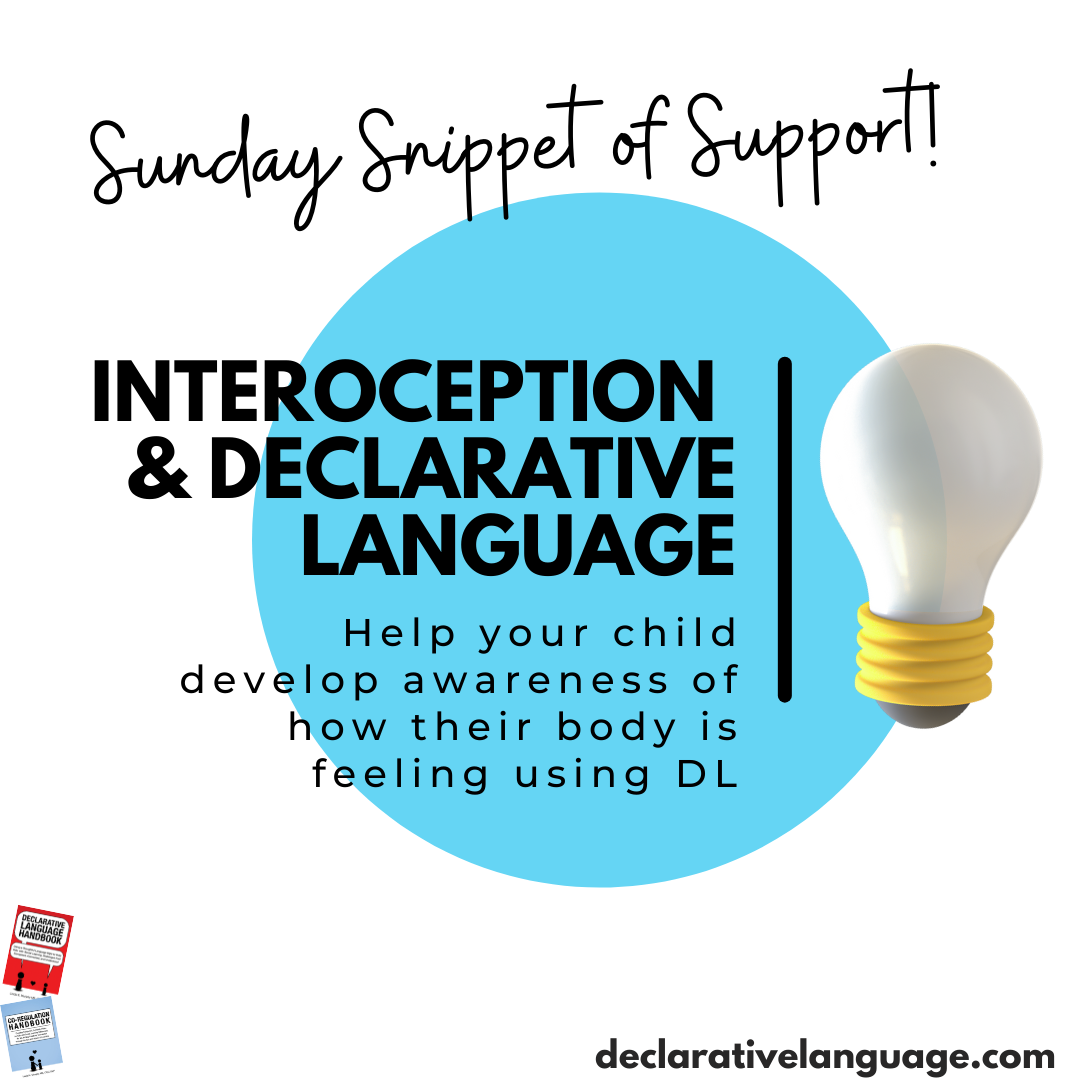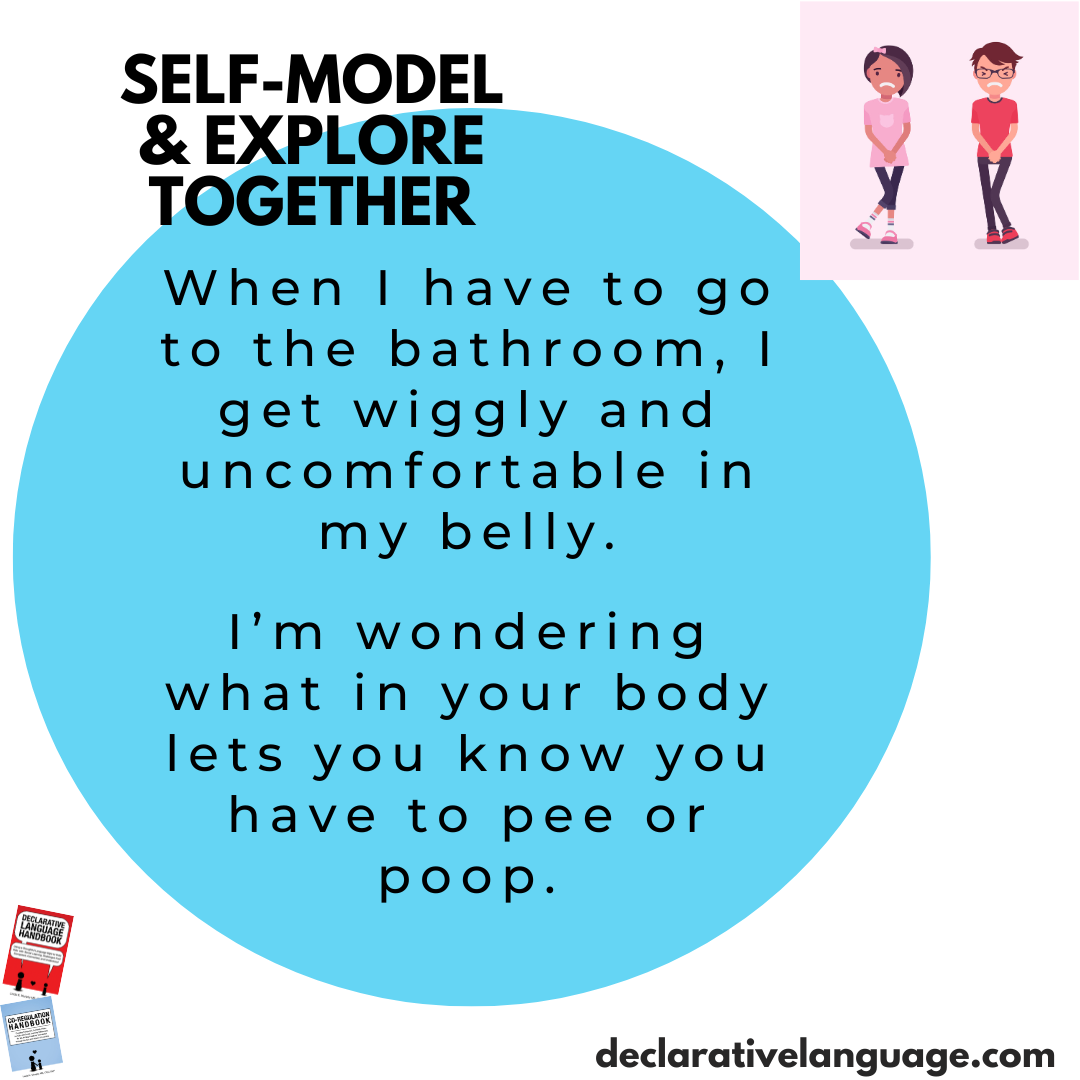Interoception and Declarative Language
I have recently enjoyed learning about interoception from Kelly Mahler, OT!
Interoception is our ability to sense how our body is feeling. For example, we can tell when we are hungry, thirsty, tired, too hot, too cold, and so on.
Being able to read our own internal cues is essential for successful self-regulation.
Here is why…
Imagine if you felt discomfort or pain in your stomach, but didn’t know what it meant or what to do about it.
Or, what if you started to sweat and your face became flushed, but you couldn’t place why.
Wouldn’t those feelings of discomfort get in the way of everything else?
In contrast, when our interoception is well developed, or when we can accurately detect and correctly interpret our own internal cues, we can take steps to help ourselves feel comfortable.
Pain in my belly? I might be hungry and eating could help.
Sweating? Cheeks flushed? I could be hot! Maybe taking off my coat will help.
When a person cannot accurately detect and correctly interpret their internal cues, it most certainly will interfere with attention, engagement, and learning.
Here’s the thing: a lot of individuals with social learning differences have difficulty accurately detecting and correctly interpreting their own internal cues – i.e., have difficulty with interoception. This means, they may feel physical discomfort, not know why, and not know what to do to feel better.
Furthermore, this difficulty may present to others as restlessness or even challenging behaviors.
It is crucial that we understand where the observable behavior is coming from, so we can effectively help.
Here’s the good news!
You can start to help your child and students develop this area of learning and self-awareness right away, using declarative language.
Use declarative language to share your observations with your child, paired with true curiosity about what they are experiencing. You may also share your own personal knowledge and experiences, to model what this looks like in action.
Importantly, we can never assume what another person is feeling or experiencing, because everyone’s sensory system is unique. But, we can model our own interoceptive awarness, while being curious about the individual we are with.
We can also thoughtfully teach some of the ways we may help our own bodies become comfortable, while again supporting them to explore what may help them.
Here are some examples:
Wow! I drank that water really fast. I was thirsty!
Wow! You drank that water fast! I’m curious if you might be thirsty.
When I am hungry, my belly hurts and my tummy growls! That tells me to go get a snack. I wonder how your body lets you know it is hungry.
When I have to go to the bathroom, I become wiggly! I’m wondering what in your body tells you that you might have to pee or poop.
Your cheeks are red, and you are sweating. You might be hot. Would you like to take off your coat and see if that helps?
Here are some other ways you can use your own experiences in the moment as models:
I can feel my heart beating fast after chasing you! I’m out of breath and need to stop for a minute before we play again.
I am having trouble keeping my eyes open. I am really tired!
I am shivering. I’m going to put on a sweater because I am cold.
As kids learn about their own bodies, they can better communicate how they are feeling, self-advocate for what they need, and ultimately take steps to stay comfortable and regulated.
Have a great week!






